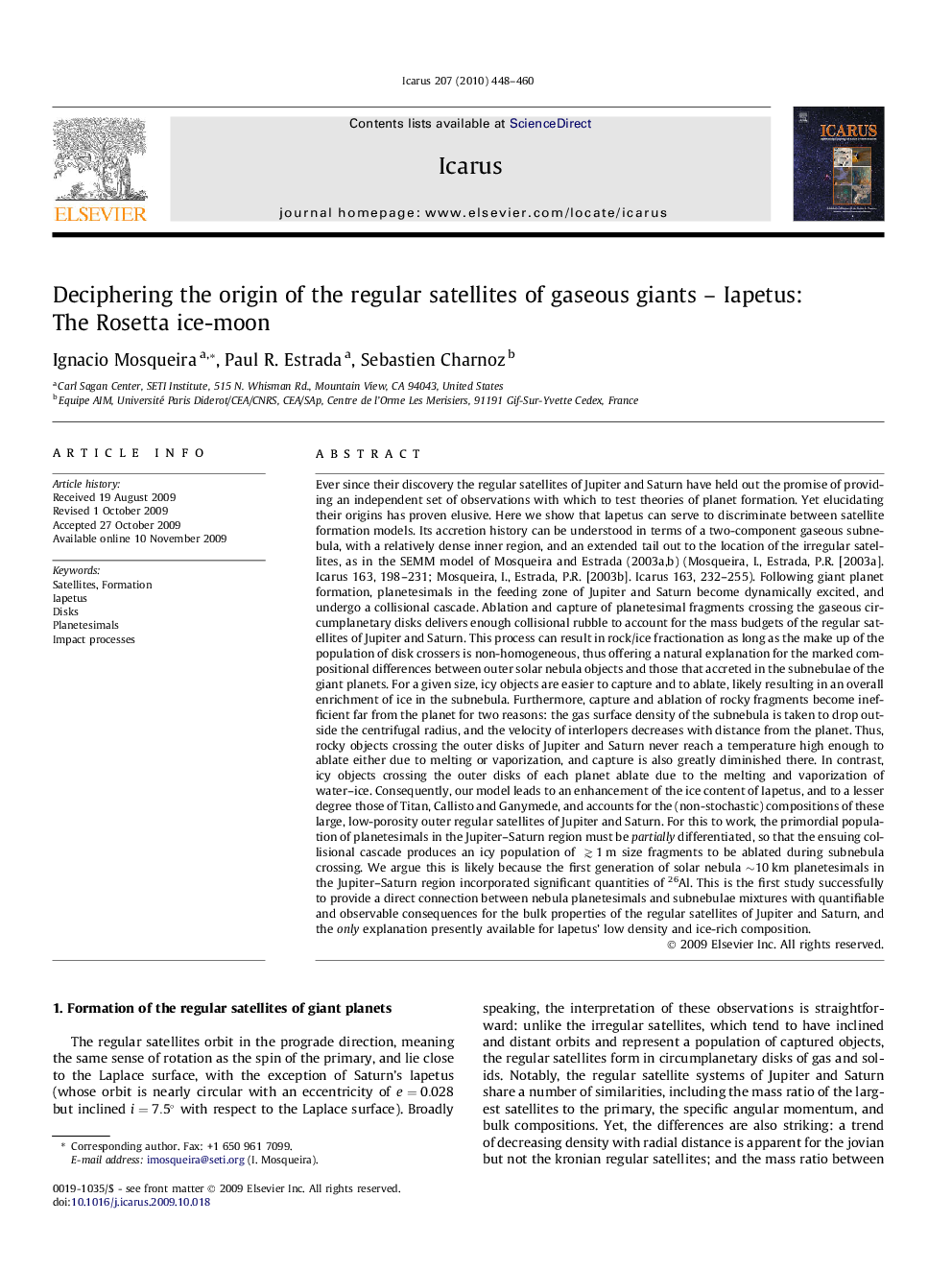| کد مقاله | کد نشریه | سال انتشار | مقاله انگلیسی | نسخه تمام متن |
|---|---|---|---|---|
| 1774501 | 1021166 | 2010 | 13 صفحه PDF | دانلود رایگان |

Ever since their discovery the regular satellites of Jupiter and Saturn have held out the promise of providing an independent set of observations with which to test theories of planet formation. Yet elucidating their origins has proven elusive. Here we show that Iapetus can serve to discriminate between satellite formation models. Its accretion history can be understood in terms of a two-component gaseous subnebula, with a relatively dense inner region, and an extended tail out to the location of the irregular satellites, as in the SEMM model of Mosqueira and Estrada (2003a,b) (Mosqueira, I., Estrada, P.R. [2003a]. Icarus 163, 198–231; Mosqueira, I., Estrada, P.R. [2003b]. Icarus 163, 232–255). Following giant planet formation, planetesimals in the feeding zone of Jupiter and Saturn become dynamically excited, and undergo a collisional cascade. Ablation and capture of planetesimal fragments crossing the gaseous circumplanetary disks delivers enough collisional rubble to account for the mass budgets of the regular satellites of Jupiter and Saturn. This process can result in rock/ice fractionation as long as the make up of the population of disk crossers is non-homogeneous, thus offering a natural explanation for the marked compositional differences between outer solar nebula objects and those that accreted in the subnebulae of the giant planets. For a given size, icy objects are easier to capture and to ablate, likely resulting in an overall enrichment of ice in the subnebula. Furthermore, capture and ablation of rocky fragments become inefficient far from the planet for two reasons: the gas surface density of the subnebula is taken to drop outside the centrifugal radius, and the velocity of interlopers decreases with distance from the planet. Thus, rocky objects crossing the outer disks of Jupiter and Saturn never reach a temperature high enough to ablate either due to melting or vaporization, and capture is also greatly diminished there. In contrast, icy objects crossing the outer disks of each planet ablate due to the melting and vaporization of water–ice. Consequently, our model leads to an enhancement of the ice content of Iapetus, and to a lesser degree those of Titan, Callisto and Ganymede, and accounts for the (non-stochastic) compositions of these large, low-porosity outer regular satellites of Jupiter and Saturn. For this to work, the primordial population of planetesimals in the Jupiter–Saturn region must be partially differentiated, so that the ensuing collisional cascade produces an icy population of ≳1 m size fragments to be ablated during subnebula crossing. We argue this is likely because the first generation of solar nebula ∼10 km planetesimals in the Jupiter–Saturn region incorporated significant quantities of 26Al. This is the first study successfully to provide a direct connection between nebula planetesimals and subnebulae mixtures with quantifiable and observable consequences for the bulk properties of the regular satellites of Jupiter and Saturn, and the only explanation presently available for Iapetus’ low density and ice-rich composition.
Journal: Icarus - Volume 207, Issue 1, May 2010, Pages 448–460